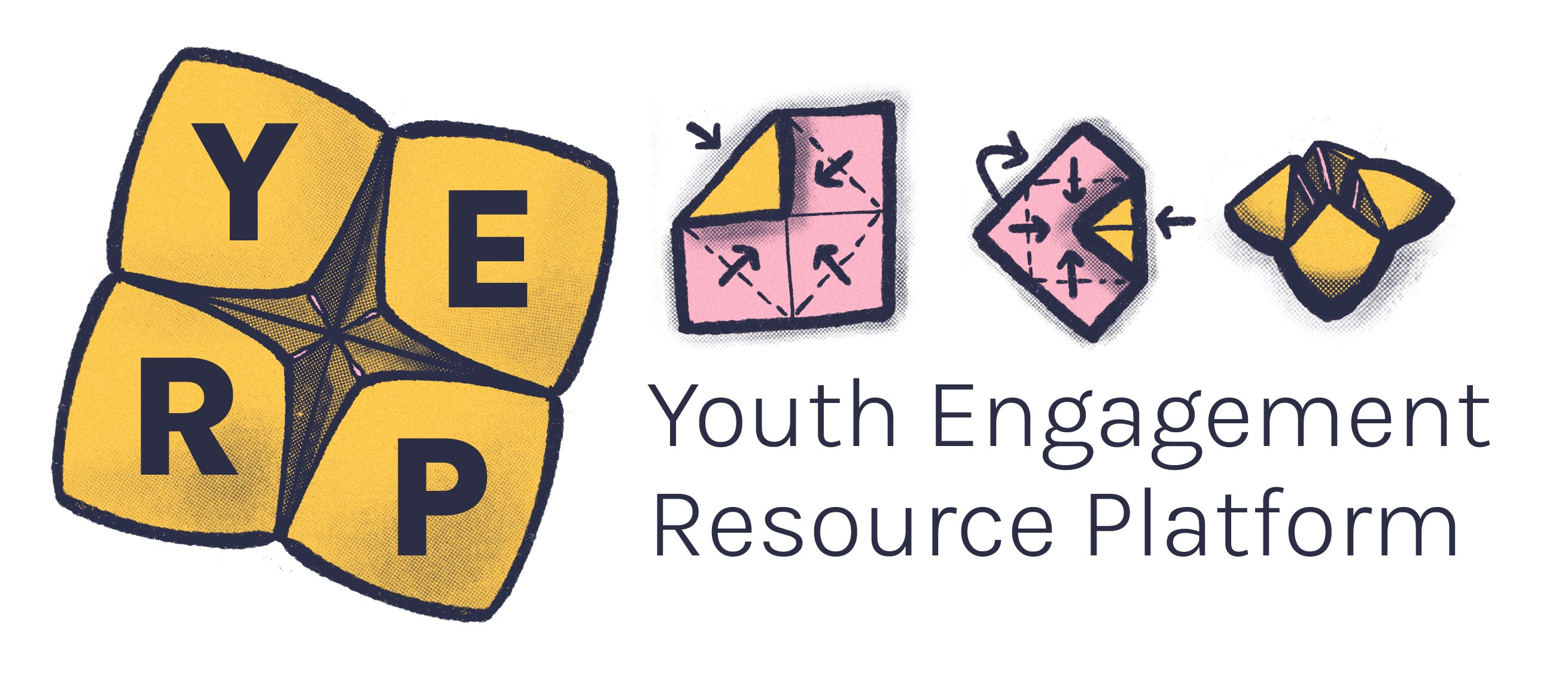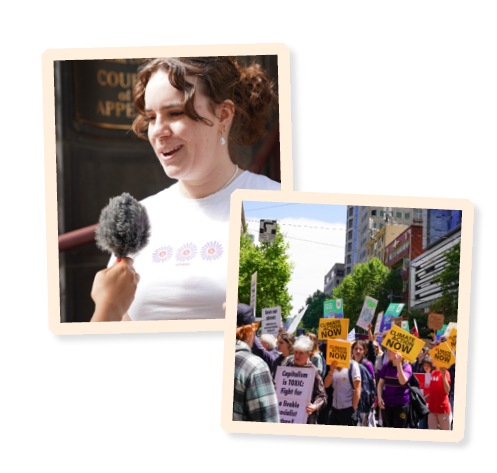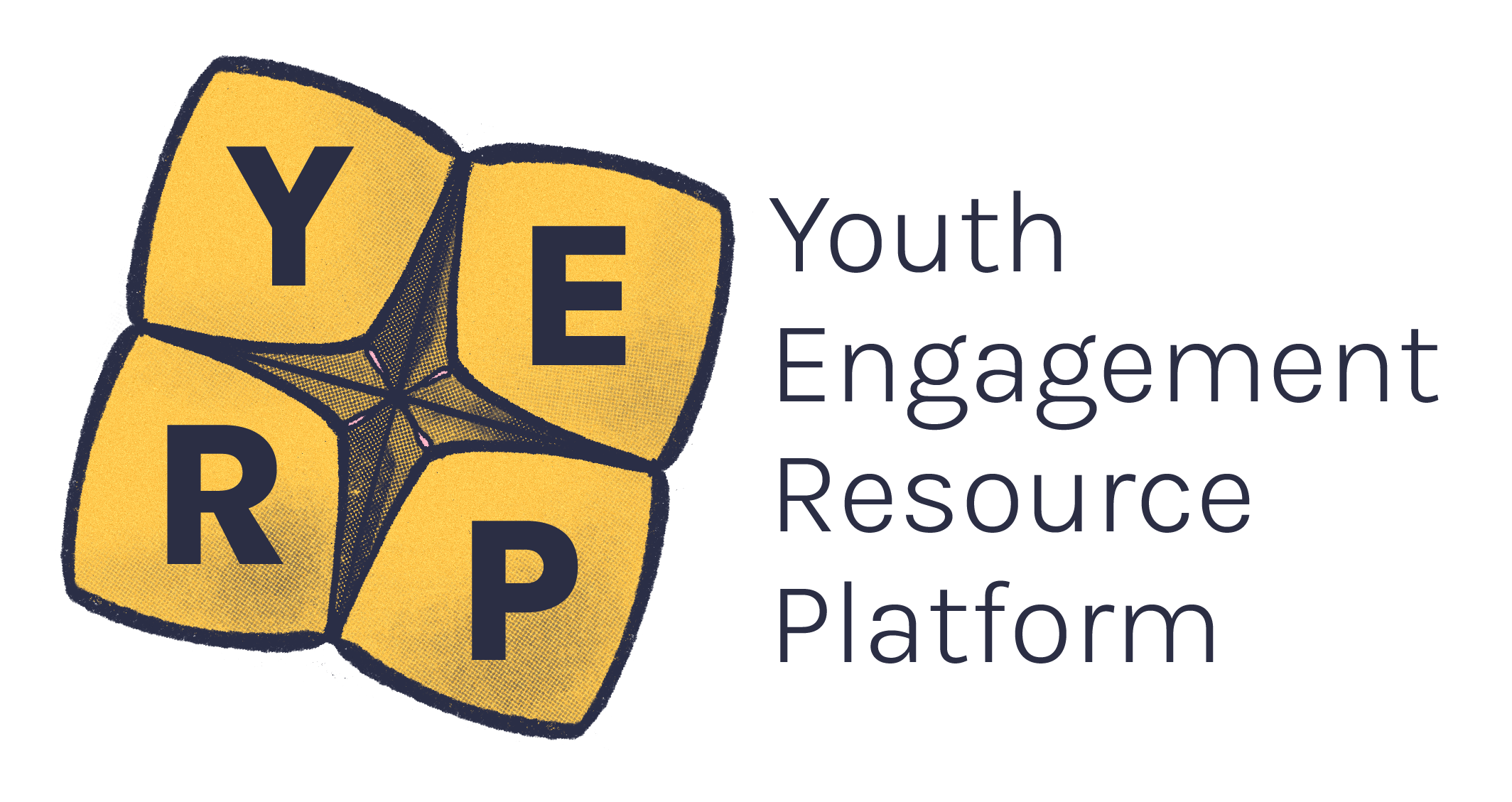Part of working with young people is understanding the systemic barriers they face. Some young people also may be interested in Making major changes to how a whole system works, instead of changes to just a specific aspect.systems change advocacy — here’s how you can support them.
♫ Gentle, positive music plays in background ♫
Speaker 1 - Matt
This disconnect between young people's experiences and adults reactions can be understood by seeing how we experience the world differently.
I suspect most adults relate to the feeling that time seems to pass by faster and faster as you get older.
You know, the 10 week school terms would crawl by for me as a child, but getting older seems to directly speed up a person's perception of time.
Each new year is a small portion of our lives. So a year feels like a mountain to climb for a 14 year old, but it's just another opportunity for a 28 year old. One year is twice as long for someone half as old.
Time crawls by for young people, and we typically have fewer experiences to contextualise our current challenges. This ultimately leads to youth being characterised by extremes of emotions, challenges and opportunities.
Adults seem to have already made it through every worst day of their lives so far. As we get older, horizons open up, and these concerns can seem smaller. But it's important to hear the reasons for young people's feelings.
Speaker 2 - Emily
As a youth worker, you probably have control over the things that matter to you. We as young people typically don't.
Every day young people have big decisions about their current lives and futures made for them by the adults around them.
Even with the best interests for the young person, the decisions made for them may not align with their wants and priorities. This takes away from our autonomy and independence.
Speaker 3 - Lauri
Young people and adults see and experience the world differently. With different challenges in different contexts, it can be hard to put ourselves in each other's shoes.
When we really begin to understand these differences and their importance, we can equip ourselves to respond to young people's problems with empathy.
Even though I'm still a young person, I've noticed in myself as a youth worker that this disconnect has already started to emerge.
Despite not long graduating from high school myself, I've already started to lose the context of what it means to be a student. I find myself dismissing their feelings when I'm actually trying to provide comfort, but think things like Oh, this isn't a big deal if they fail, it's only one assessment. But actually it is a big deal.
I know that I would be okay if I didn't do well on a test because I've done that before. I failed, I've resat, I graduated anyway.
It's easy to become desensitised to the issues of young people as we get older. We tend to forget what it was like to live a life of extremes and lack control of our biggest decisions.
The youth sector's main purpose is to empower young people. When young people feel disempowered, the sector and workers are there to help us where we're at. Because no amount of advice given can replace the experiences that we haven't lived yet.
Watch this video from our young co-designers Emily (she/her), Matt (he/him) and Lauri (they/them) to hear their message to youth workers!
Young people often learn about issues as they live them. Youth workers can try to be someone the young person can talk through their challenges with, be responsive, and unpack the systemic barriers or political issues that affect them.
Systematic barriers are those obstacles that disadvantage a particular group of people and their use of particular systems.1 These are built into systems and processes and often require advocacy to try and change them.
Young people may face many systemic barriers. Some examples include:
- built environment barriers such as not having ramps, not having interpreters or captioning for live streamed announcements.
- recruitment agencies having confusing processes which makes it challenging for people to find employment.
- exclusion from political environments
- lack of representation
- lack of ‘straight-through’ processes, like lots of bureaucracy blocking access to financial support such as JobSeeker or Youth Allowance
- lack of support networks
- limited access to education
- limited access to healthcare.1, 2
- Climate change: research the effects of climate change and why it’s a pressing issue for young people — for example, they might experience A stressed, anxious feeling when you think about the future of the planet. This can come from feeling overwhelmed or helpless.climate anxiety, feel unheard, or fear for their future. Read through the Duty of Care Bill’s story to see how young people are advocating for their right for the government to protect their futures.
- Aboriginal and Torres Strait Islander people: connect with First Nations communities, Aboriginal-led youth organisations, and listen and support their path to self-determination and Treaty.
- New migrants and refugees: learn about the added layer of complexities and isolation that newly-arrived young people face.
- Disability: understand the disabling and ableist aspects of society, and research human rights policies for disabled young people.
- Age: research the rights young people have in different contexts — for example, work or school, minimum wage — and how they differ to older people’s rights.
- LGBTIQA+: learn about LGBTIQA+ identities and the nuance of having intersecting identities.
Showing young people that you have learnt and understand their contexts builds a greater level of trust and support. It will also help you guide a young person through research to find reliable information.
Example: different experiences of housing barriers
Young people experience unique barriers finding affordable and long-term rentals because most landlords require rental histories and references.
A newly arrived young migrant might face additional barriers. They might be at a significant financial disadvantage, arriving with few or no possessions. But as their Visa entitlements limit how they can earn an income, finding stable housing can be uniquely difficult.3
Photo of a modern high rise apartment block in Melbourne, taken from below.

There are a range of ways to support young people’s advocacy. You could:
- Take young people to a rally, protest or march. If this is outside the scope of your role or organisation, you might support them before or after the event with a debrief, or provide them with a space to make banners, signs, and badges before the event.
- Support young people to create and distribute a petition.
- Facilitate or set up a meeting between young people and their local, state or federal Member of Parliament (MP) to share their ideas and experiences.
- Help young people to write to their MPs.
- Support young people with grant writing for funding opportunities.
- Listen to their frustrations with a system, and support them to find a work-around.
- Support young people to find and identify reliable online resources, including social media accounts
- Ask an expert to speak to the young people you work with about safe practice and self-care in advocacy.
Group photo of four young people at an advocacy event. They are all wearing masks, but you can see they are smiling. They are standing in front of a YACVic banner.
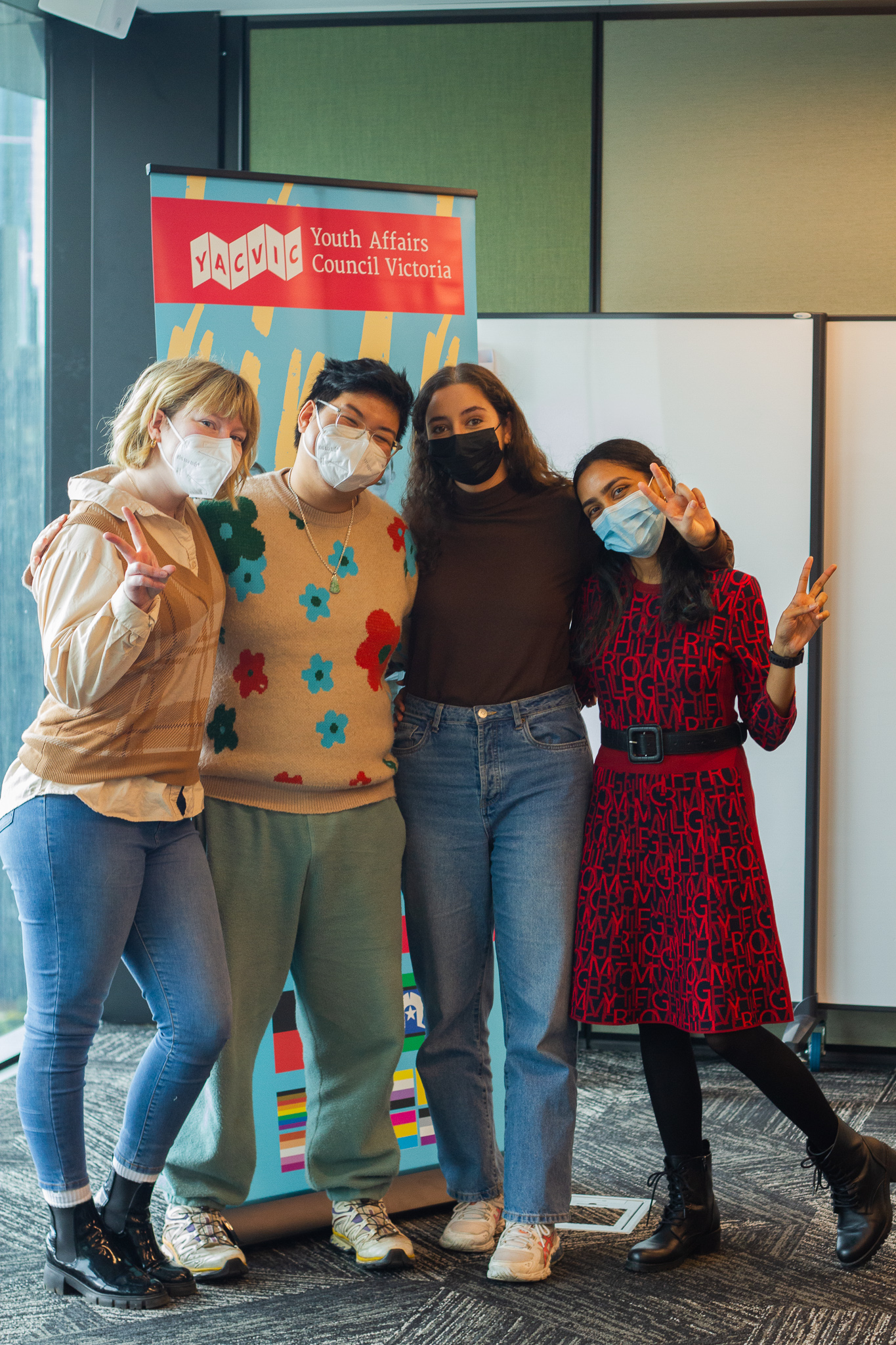
Many young people are leading or participating in advocacy to create change. You can stay up to date on the issues they care about by connecting with:
- Youth organisations. These can be generalist services or have a specific focus or cohort they work with. Some of these organisations include Minus 18, Centre for Multicultural Youth, Koorie Youth Council, Youth Disability Advocacy Service and Youth Support and Advocacy Service.
- Grassroots youth-led initiatives or trainings. You can usually access these through youth organisations and your local youth council. Social media is also great to connect to different initiatives — for example, the School Strike 4 Climate page for your local area.
- Journals, blogs and articles written by young people, or that focus on the issues that young people face. These can be found by following young advocates and following their causes or organisations dedicated to social justice. For example, Palawa woman Maggie Blanden wrote this moving article for Common Ground for National Reconciliation Week about what she wants for the future.
- Young people themselves. Seems obvious but they are the experts!
Close-up of an early teenage girl in school uniform holding a handmade sign. It says 'CMIATE ACTION NOW!' with drawings around it of the sun, the earth on fire, a cyclone, a first raised in power with leaves around it, and a heart next to the small words 'the EARTH'.
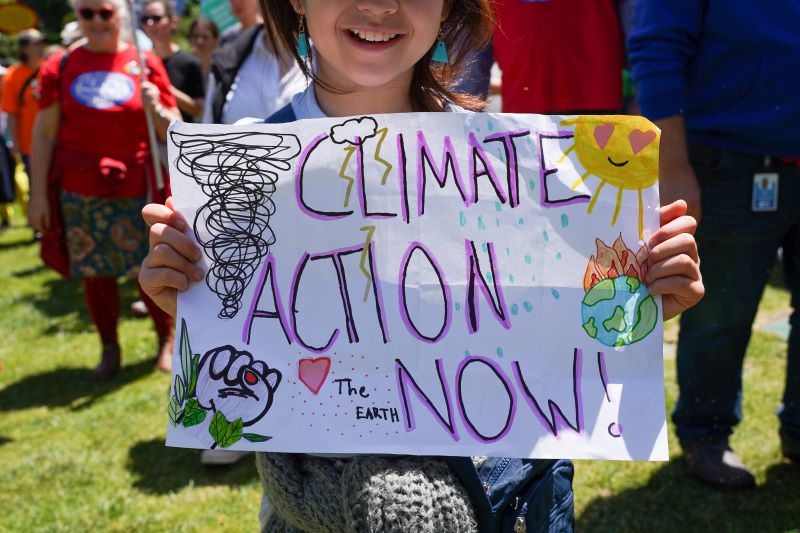
While engaging in advocacy can be an empowering experience for young people, there can also be risks with potentially lasting effects.
Wise Employment talks about how actions from your past that can follow you into future employment. Unfortunately, when someone advocates publicly, their words and actions can ‘follow them’ negatively and impact their life and career opportunities.4
For example, some workplaces will search the names of possible employees during recruitment to see what they have been up to in the past. This can be done through social media or simply searching your name online.
Remember to walk young people through the possible risks associated with engaging in public campaigns or the media and think about their future goals and career prospects.
You might like to talk to young people about:
- How what they post online stays there forever.
- Their career goals. Do they want to work in a field where public advocacy can be used against them, such as politics or law?
- What they want others to know about them. Are they comfortable with strangers knowing about their personal life experiences?
- If they are comfortable with their community knowing about specific parts of their life, especially elders or community leaders. It’s good for the young person to consider if there are any issues or topics that are stigmatised within their community.
This conversation is not to discourage the young person from public advocacy campaigns or events. Your goal should be to help them make an informed decision that suits them and their future.
- Simms, M., McDaniel, M., Fyffe, S., Lowenstein, C. (October 2015). Structural Barriers to Racial Equity in Pittsburgh. https://www.urban.org/sites/default/files/alfresco/publication-pdfs/2000518-Structural-Barriers-to-Racial-Equity-in-Pittsburgh-Expanding-Economic-Opportunity-for-African-American-Men-and-Boys.pdf
- Barriers of Communication. (n.d). Systematic Barriers in Communication. https://barriersofcommunication.com/systematic-barriers-in-communication/
- Centre for Multicultural Youth. (September 2020). Working with newly-arrived young people who are homeless or at risk of homelessness information sheet.
- Wise Employment. (n.d). How social media can impact your job search. https://wiseemployment.com.au/resources/how-social-media-can-impact-your-job-search/
